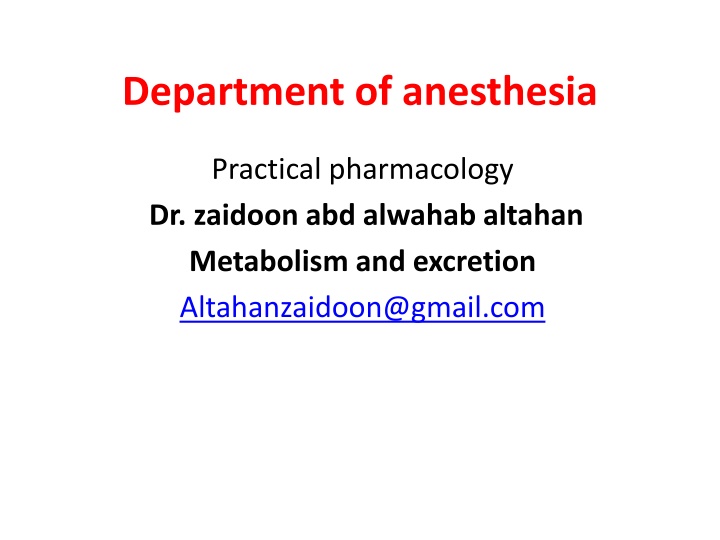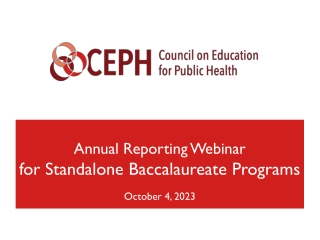
Drug Metabolism and Elimination in Anesthesia Pharmacology
Explore the key concepts of drug metabolism and elimination in anesthesia pharmacology, highlighting the processes of biotransformation and excretion. Discover how different routes of drug elimination impact plasma concentration over time.
Download Presentation

Please find below an Image/Link to download the presentation.
The content on the website is provided AS IS for your information and personal use only. It may not be sold, licensed, or shared on other websites without obtaining consent from the author. If you encounter any issues during the download, it is possible that the publisher has removed the file from their server.
You are allowed to download the files provided on this website for personal or commercial use, subject to the condition that they are used lawfully. All files are the property of their respective owners.
The content on the website is provided AS IS for your information and personal use only. It may not be sold, licensed, or shared on other websites without obtaining consent from the author.
E N D
Presentation Transcript
Department of anesthesia Practical pharmacology Dr. zaidoon abd alwahab altahan Metabolism and excretion Altahanzaidoon@gmail.com
metabolism and elimination Elimination: is irreversible removal of drug from the body. It involves biotransformation (drug metabolism) and excretion. Elimination processes decrease the plasma concentration of drug per unit of time There are three major route of drug elimination (hepatic metabolism, biliary elimination, and urinary excretion).
Drug metabolism The kidney cannot efficiently excrete lipophilic drugs that readily cross cell membranes and are reabsorbed lipid-soluble agents (drug) are first metabolized into more polar (hydrophilic) substances in the liver via two general sets of reactions called phase I and phase II
Phase 1: Phase I reactions convert lipophilic drugs into more polar molecules Phase I metabolism may increase, decrease, or have no effect on pharmacologic activity.
Phase II : If the metabolite from phase I is sufficiently polar, it can be excreted by the kidneys directly (not need phase2) Many phase 1 metabolites are still too lipophilic to be excreted so these compound needs additional reaction (phase 2) to become water soluble (polar) compound Many drugs after became polar agent , its became (therapeutically inactive)
route of drug excretion 1. Other route (sweat, saliva, tears, hair, and skin)



















